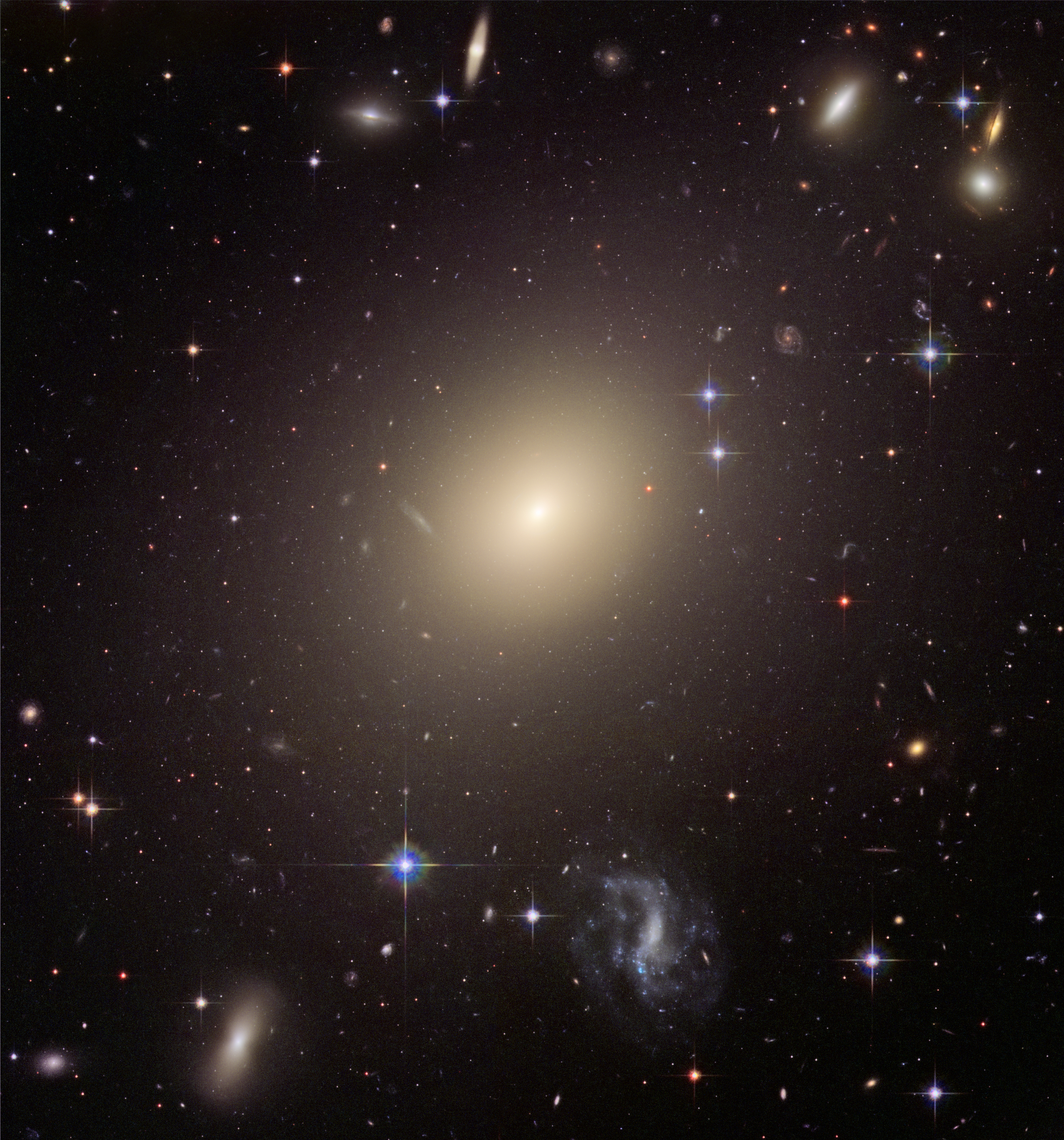But every galaxy is unique. The Milky Way forms stars like most galaxies, contains the same things and are in general a very 'vanilla' galaxy, yet events throughout the life of the Milky Way has changed and shaped it to make it different from every other.
One of the most recognised difference between galaxies is their shape. This can be seen if you simply look at galaxies. Many of us if told to draw a galaxy would draw a big disk with spiral arms stretching out from the centre, because this is often the type of galaxy we see most in images (probably because they are the most stunning to look at). But these Spiral galaxies are not the only inhabitants of the universe. Giant spherical Elliptical galaxies with bulges of stars at the centre dominate the universe, containing the majority of all the stars. These galactic giants are very different from the beautiful spirals, both in looks and properties, on average forming much less stars and typically being much less active. Then there are Irregular shaped galaxies, those that look like no other due to their disturbed shapes. These can be elongated, squashed or take some shape that barely looks like a galaxy any more.
 |
| An elliptical galaxy.Credit: |
But why are there different shapes of galaxies and what causes them. Well we think it might be due to how galaxies interact with each other. It's generally accepted that Irregular galaxies are the result of merging galaxies and it's thought that Spirals in some way evolve in to Elliptical galaxies. But no one really knows how this happens and is one of the biggest mysteries is astrophysics. But as my research is trying to understand this problem, I should probably stop writing this post and get back to work!
| A Spiral Galaxy. |
No comments:
Post a Comment